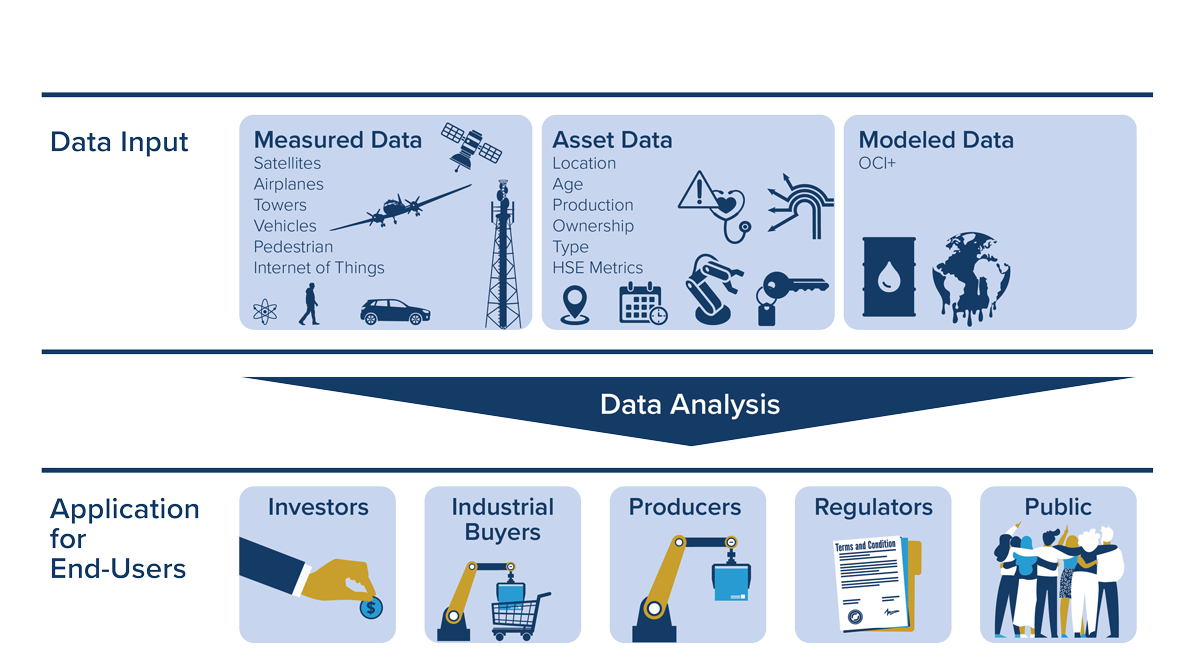
Report | 2020
Making Emissions Visible
A Clear Path to Insights and Action for the Oil and Gas Industry
Imagine if influencers, policymakers, CEOs, and institutions like banks and insurance firms were empowered with vetted, real-time emissions data and a trusted climate intelligence resource. Imagine if we could see greenhouse gas (GHG) emissions in real time, use that data to inform planning, and know—in real-time—if our actions are having impact to reduce emissions in half by 2050. Although a system for producing accurate, timely, and actionable data on global emissions across all sectors does not yet exist, the data does.
To make emissions data visible and actionable, Rocky Mountain Institute (RMI), in partnership with Spherical Analytics (S|A), has launched the Climate Action Engine (CAE). By connecting industry, finance, and other stakeholders with high-quality data, the CAE will help them understand how to meet emissions reduction targets collaboratively and will help move capital to support climate regeneration.

The Climate Action Engine workflow
The new tool will produce accurate and timely GHG emissions data to inform planning and action related to reducing methane emissions from the oil and gas industry in the Texas Permian Basin initially, with plans to expand into other US regions, and eventually, globally.
Over half of global energy-related carbon dioxide equivalent emissions come from the production, transportation, and use of oil and gas products, and the industry is facing pressure to reduce emissions from regulators, buyers, investors, and the general public. The CAE is uniquely positioned to meet and respond to the oil and gas industry’s need to make methane emissions reduction actionable.
By bringing data, intelligence, and stakeholders together on a single platform, the CAE is enabling solutions for the oil and gas industry that benefit the climate and enable economic security.